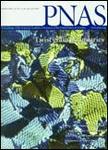版权所有:内蒙古大学图书馆 技术提供:维普资讯• 智图
内蒙古自治区呼和浩特市赛罕区大学西街235号 邮编: 010021

作者机构:Univ Tokyo Fac Med Dept Pediat Bunkyo Ku Tokyo 1138655 Japan Kyoto Prefectural Univ Med Dept Internal Med 3 Kamigyo Ku Kyoto 6028566 Japan Osaka City Gen Hosp Dept Pediat Miyakojima Ku Osaka 5340021 Japan
出 版 物:《PROCEEDINGS OF THE NATIONAL ACADEMY OF SCIENCES OF THE UNITED STATES OF AMERICA》 (美国国家科学院汇刊)
年 卷 期:1999年第96卷第25期
页 面:14535-14540页
核心收录:
主 题:氨基酸序列 人工基因融合 碱基序列 染色体图 染色体 人 11对 染色体 人 5对 DNA 互补/分离和提纯 DNA结合蛋白质类/遗传学 组蛋白赖氨酸N-甲基转移酶 分子序列数据 髓淋巴细胞性白血病蛋白质 核蛋白质类/遗传学 前体细胞淋巴母细胞白血病淋巴瘤/遗传学 蛋白质类/遗传学 原癌基因 RNA 信使/分析 反式激活因子类 转录因子 转录延伸因子类 女(雌)性 人类 婴儿
摘 要:Infant acute lymphoblastic leukemia (ALL) with MLL gene rearrangements is characterized by early pre-B phenotype (CD10(-)/CD19(+)) and poor treatment outcome. The t(4;11). creating MLL-AF4 chimeric transcripts, is the predominant 11q23 chromosome translocation in infant ALL and is associated with extremely poor prognosis as compared with other 11q23 translocations. We analyzed an infant early preB ALL with ins(5;11)(q31;q13q23) and identified the AF5q31 gene on chromosome 5q31 as a fusion partner of the MLL gene. The AF5q31 gene, which encoded a protein of 1,163 aa, was located in the vicinity of the cytokine cluster region of chromosome 5q31 and contained at least 16 exons. The AF5q31 gene was expressed in fetal heart. lung, and brain at relatively high levels and fetal liver at a low level. but the expression in these tissues decreased in adults. The AF5q31 protein was homologous to AF4-related proteins, including AF4, LAF4, and FMR2. The AF5q31 and AF4 proteins had three homologous regions, including the transactivation domain of AF4, and the breakpoint of AF5q31 was located within the region homologous to the transactivation domain of AF4. Furthermore, the clinical features of this patient with the MLL-AF5q31 fusion transcript. characterized by the early pre-B phenotype (CD10(-)/CD19(+)) and poor outcome. were similar to those of patients having MLL-AF4 chimeric transcripts. These findings suggest that AF5q31 and AF4 might define a new family particularly involved in the pathogenesis of 11q23-associated-ALL.